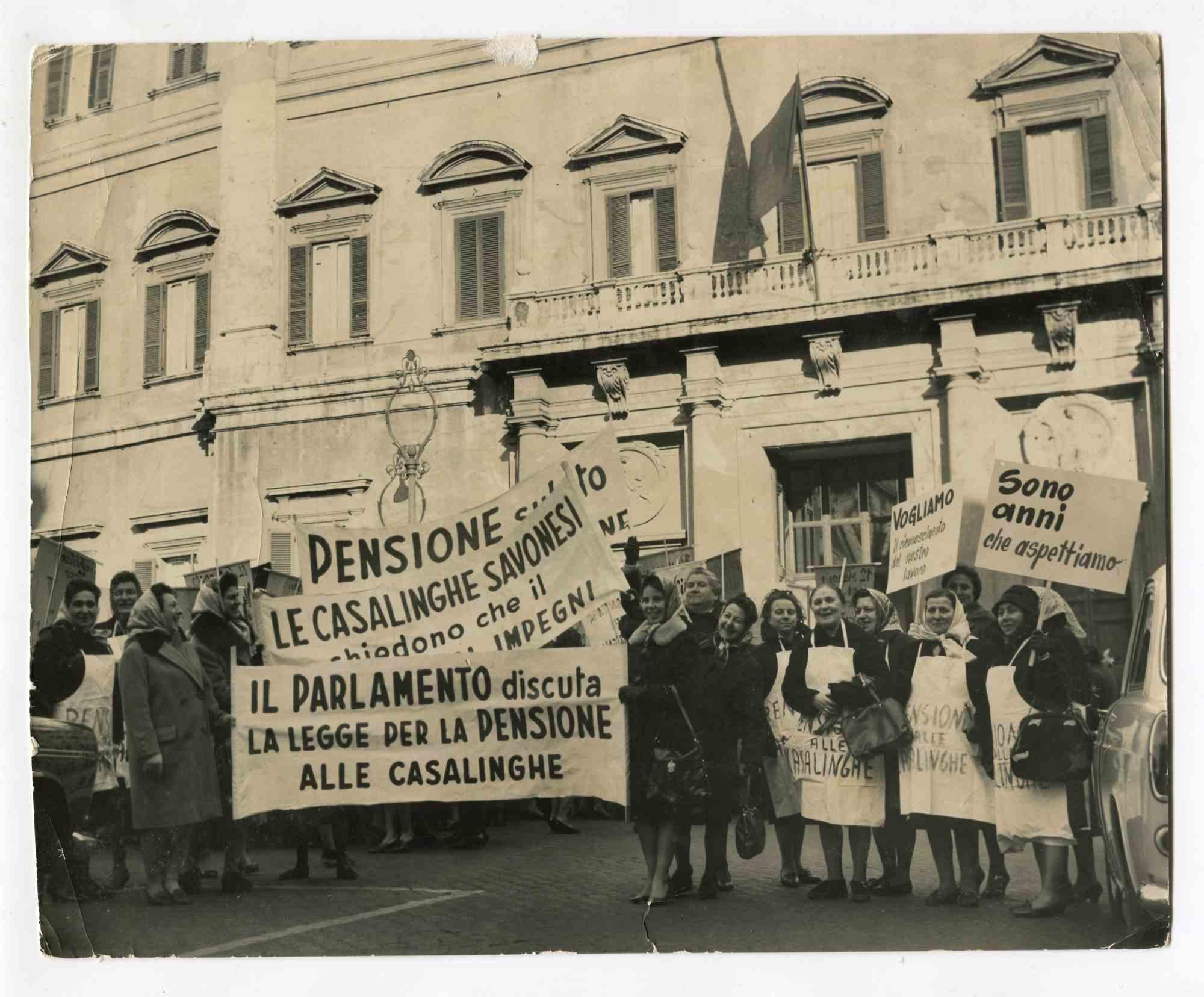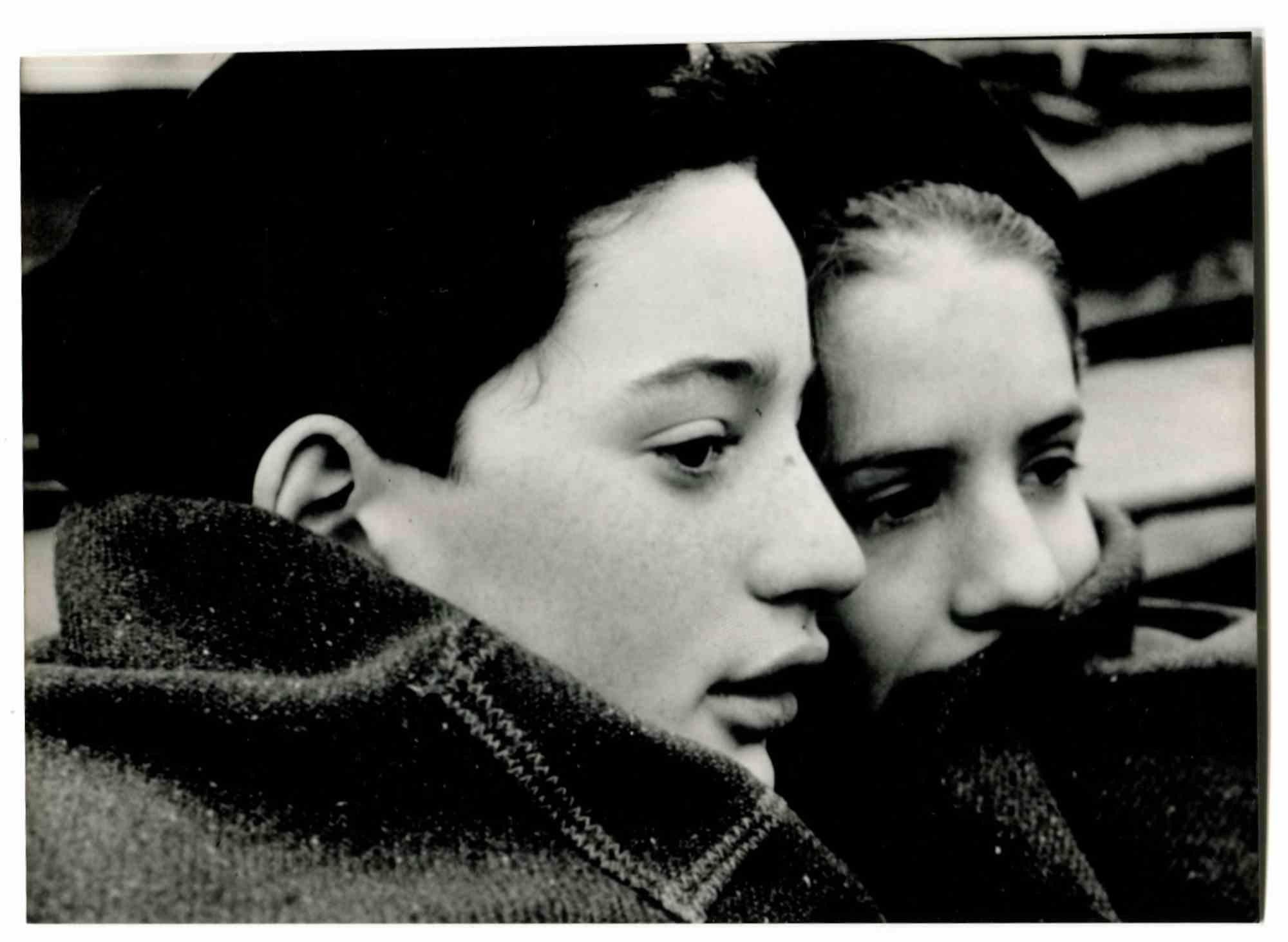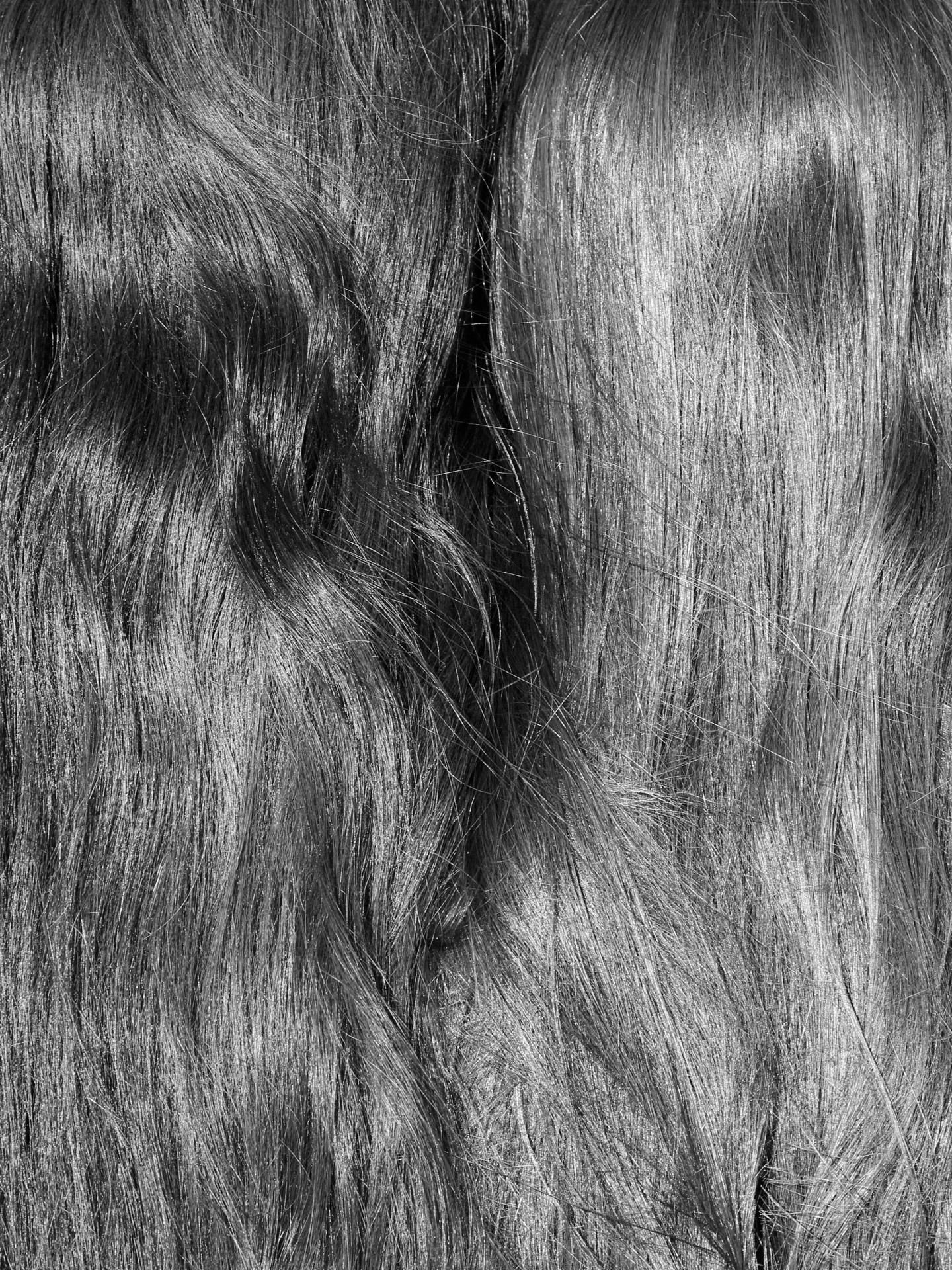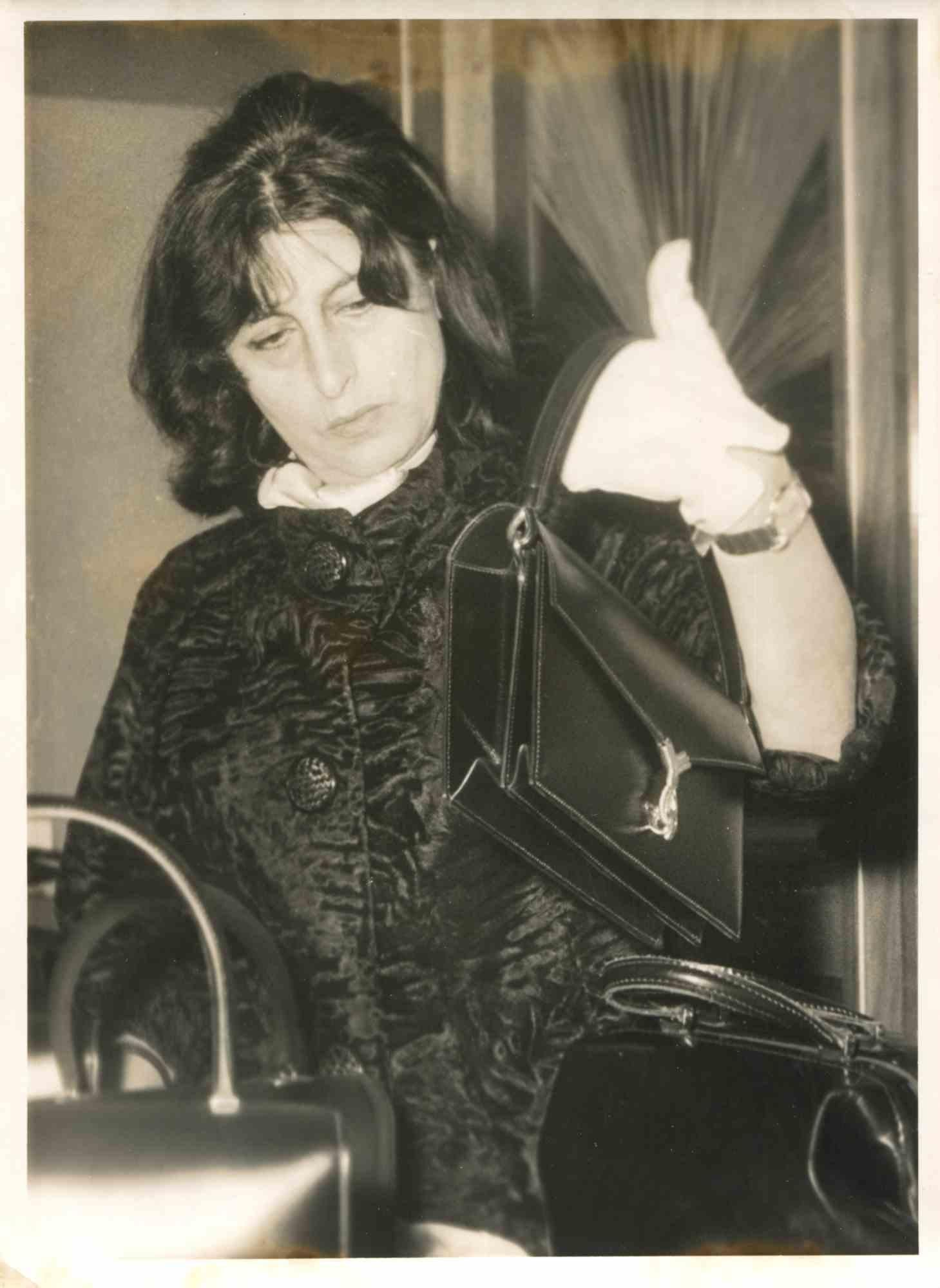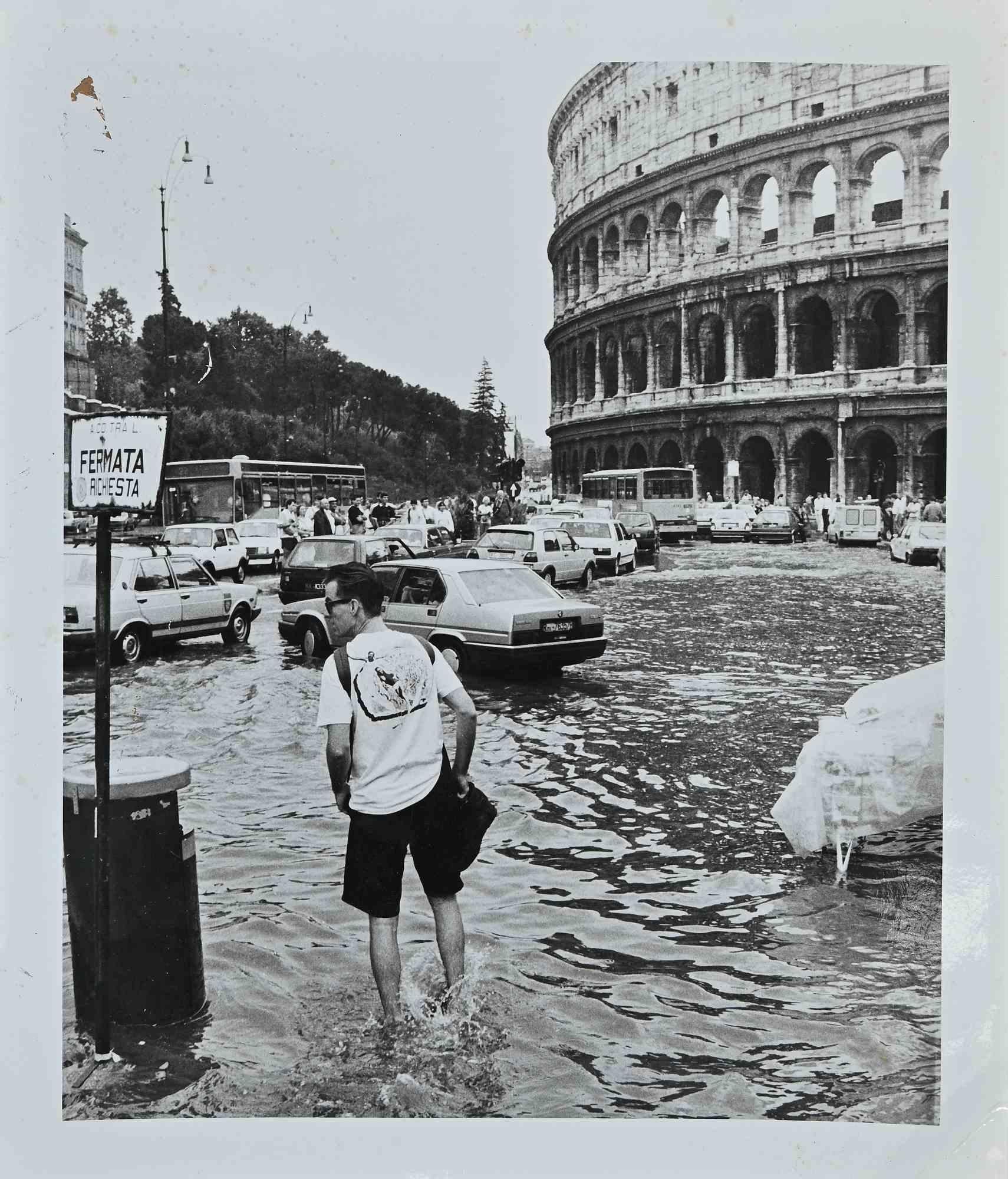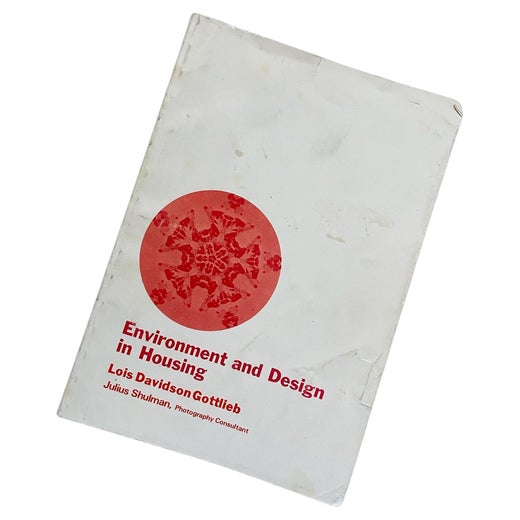Julius ShulmanArchitectural Study - Interior
About the Item
- Creator:Julius Shulman (1910 - 2009, American)
- Dimensions:Height: 8 in (20.32 cm)Width: 10 in (25.4 cm)
- Medium:
- Movement & Style:
- Period:
- Condition:
- Gallery Location:Surfside, FL
- Reference Number:1stDibs: LU38210791002
Julius Shulman
Julius Shulman was an American architectural photographer best known for his photograph Case Study House #22 (Two Girls), Los Angeles, CA (Pierre Koenig, Architect, 1959). The house is also known as the Stahl House. Shulman's photography spread California's mid-century modernism around the world. Through his many books, exhibits and personal appearances his work ushered in a new appreciation for the movement beginning in the 1990s.
Shulman’s vast library of images currently resides at the Getty Center in Los Angeles. His contemporaries include Ezra Stoller and Hedrich Blessing Photographers. In 1947, Julius Shulman asked architect Raphael Soriano to build a mid-century steel home and studio in the Hollywood Hills.
Some of Shulman's architectural photographs, like the iconic shots of Frank Lloyd Wright's or Pierre Koenig's remarkable structures, have been published countless times. The brilliance of buildings like those by Charles Eames, as well as those of his close friends, Richard Neutra and Raphael Soriano, was first brought to light by Shulman's photography. The clarity of his work demanded that architectural photography had to be considered an independent art form.
Each Shulman image unites perception and understanding of the buildings and their place in the landscape. The precise compositions reveal not just the architectural ideas behind a building's surface, but also the visions and hopes of an entire age. A sense of humanity is always present in his work, even when the human figure is absent from the actual photographs.
Many of the buildings photographed by Shulman have since been demolished or re-purposed, lending to the popularity of his images.
Find original Julius Shulman photography on 1stDibs.
(Biography provided by Lions Gallery)
- ShippingRetrieving quote...Ships From: Surfside, FL
- Return PolicyA return for this item may be initiated within 3 days of delivery.
- Vintage Abstract Expressionist Hyman Bloom Photo Collage Assemblage PhotographBy Martin SumersLocated in Surfside, FLThis is a unique original collage, decoupage style of Jiri Kolar, This is an exceptional artwork which was part of a collaboration between Hyman Bloom and fellow artist and his very ...Category
1990s Modern Abstract Photography
MaterialsPaper, Photographic Paper
- Vintage Contact Sheet Jaffa, Tel Aviv circa 1940sLocated in Surfside, FLA rare British Mandate Palestine, early state of Israel era, Black and White photography contact sheet. these were from a photo collection that included Robert Capa and other Magnum photographers. I do not know who this is by. It has VW written on the back and each one has a Volkswagen Beatle car on it. it might be early advertising memorabilia...Category
1940s Modern Black and White Photography
MaterialsPhotographic Paper
- Vintage Silver Gelatin Print Photo Israel Museum Sculpture Jerusalem PhotographLocated in Surfside, FLSusan Hacker -Israel Museum, Sculpture Garden, Jerusalem, Israel, 1979 Silver Gelatin black/white photograph, printed in 1983, hand signed, titled (Jerusalem) and noted. There is no edition size stated Location (Jerusalem), shoot date (1979) and photo print date (1983) and signature in pencil on the bottom back of the photograph. This is of the sculpture Woman skipping rope by Luciano Minguzzi located in the Isamu Noguchi designed sculpture garden at the Israel Museum Image size: 22 x 33 cm Paper size: 28 x 35.5 cm Susan Hacker (1949) is an American photographer and author. She developed and expanded the photography department at Webster University in St. Louis. Her work is in the possession of at least 25 major museums and libraries around the world. There are also many books and publications about her. Has always experimented with many photographic techniques. Hacker is recognized as an innovator of the modern photography art. Susan Hacker Stang (born Susan Hacker, October 19, 1949) is an American photographer, author, and educator. Stang served on the faculty of communications at Webster University in St. Louis from 1974 through 2015 and now holds the title Professor Emeritus. She helped found and build the respected photography program there, heading it for most of her tenure at the university. Her work has been collected by more than 25 major museums and libraries around the world and appears in half a dozen books and numerous magazines. Much of her photography involves the innovative use of alternative cameras, formats, techniques, and media, as evidenced by her two books Encountering Florence (featuring subtly surreal black and white prints of the Italian city using 8 x 10 Polaroid emulsion transfers) and Kodachrome – End of the Run: Photographs from the Final Batches (which chronicles a six-month university photography project in which students and staff would shoot more than 100 roles of rare Kodachrome film for processing on the last day of operations by the world's last remaining Kodachrome processing lab.) In 2016, she published a book of photographs, reAPPEARANCES, which is a sequence of fifty-two photographs made with a digital toy camera (the JOCO VX5). The volume purports to take the viewer on a visual journey through the uncanny coherence of the look of the world, according to Stang's introductory essay. Stang majored in photography at the Rhode Island School of Design, where she earned both a BFA (1971) and MFA (1974), and studied under photographers Harry Callahan and Aaron Siskind. In 1971 she moved to London where she worked as a photographer for the British fashion magazine NOVA (published 1965–1975). She joined the faculty of Webster University in St. Louis in 1974, where she helped found and build the photographic studies program in the School of Communications. In Jerusalem in 1979 she was Artist-In-Residence at the Bezalel Academy of Arts and Design. In recent years, in addition to her work as head of the Webster University photography program and professor of communications, she has taught summer photography workshops in Florence, Italy, both at the Santa Reparata International School of Art (SRISA) and The Darkroom. She taught at Webster for 41 years and earned the Kemper Award for Excellence in Teaching. Stang's photography characteristically employs alternative cameras (such as the Olympus Pen-FT half-frame camera, the Kodak Brownie, and the Holga), or alternative formats (such as Polaroid emulsion transfers) and techniques. Her book of Polaroid emulsion transfers, Encountering Florence was published simultaneously in the U.S. and in Italy (under the title Firenze un Incontro) in 2007. Stang's use of the emulsion transfer process involves transferring the fragile, fabric-like emulsion layer of the photograph (bearing the image) to another surface, subtly transforming the original image in a variety of ways. The results were described in Photo Review as giving Stang's portraits of Florence's buildings, streets, statuary, and gardens "a delicate, draping quality ... reminiscent of the fabrics draped on the ancient statues within the images". An Italian reviewer observed that the photographic process presents "a city not previously seen and perhaps a little disquieting". The book's bi-lingual text in English and Italian was selected and edited by Stang and by Andrea Burzi and Susanna Sarti, both of Florence, to present accompanying word-portraits from authors in their own encounters with the city. A portfolio of Stang's work for the book is held by the Rare Books Collection of the Biblioteca Nazionale Centrale Firenze. In 2010–11, Stang led the Webster University photography program in a six-month-long focus on the color reproduction qualities of Kodachrome film (long revered by professional and amateur photographer for its true, lush color rendition qualities) to mark the permanent discontinuing of the film's production by Kodak. The project ultimately turned into a book documenting the final demise of the medium, and the last day of Kodachrome production anywhere in the world (at Dwayne's Photo in Parsons, Kansas, on January 18, 2011). The last days of processing were covered by The New York Times, National Geographic, and network television. Edited by Stang and fellow photographer Bill Barrett, Kodachrome: End of the Run presents a selection of four-score Kodachrome images shot on more than 100 roles of the film by Webster University students, faculty, and staff over a five-month period and processed by Dwayne's in the final hours as the last processing chemicals ran out. The book includes essays by Stang, Time Magazine worldwide pictures editor Arnold Drapkin, and Dwayne's Photo vice president Grant...Category
1970s American Modern Black and White Photography
MaterialsSilver Gelatin, Photographic Paper
- Vintage Silver Gelatin Photograph Print, Girls on a Beach Photo, Two Man ShowLocated in Surfside, FLRichard Lebowitz, b. 1937, American, (RISD Faculty 1964-1995, Photography; Professor Emeritus) Tom Young, b. 1951, American, (RISD MFA 1977, Photography) TIT...Category
1980s American Modern Black and White Photography
MaterialsPhotographic Paper, Silver Gelatin
- Brazilian Conceptual Modernist Photograph Jose Yalenti Architectural AbstractLocated in Surfside, FLJosé Yalenti, (1895-1967) Brazilian Photographer "Beiras" (Sides) Photo, numbered 5/15, circa 1950, (printed later) on premium luster photo paper with ultrachrome ink. Art: 15" H x 11" W; Frame: 20 1/4" H x 14 1/4" W. Provenance: Dickinson Roundell Gallery José Yalenti’s Architecture photos seem at first disorienting, abstract black & white and grey surfaces, cut through by startlingly straight lines and a variety of surface textures. Much of his work is of mid-century Latin American architecture, by the likes of Oscar Niemeyer and Roberto Burle Marx. José Yalenti was born in São Paulo, Brazil in 1895. On April 28, 1939, a group of photography aficionados, including Yalenti, formed the Foto Clube Bandeirante, later changed to Foto Cine Clube Bandeirante, or FCCB. Starting in the late 1940s, a contingent of FCCB photographers began creating photographs of abstracted architectural motifs (as in Architecture or Twilight), and eventually became known as the Escola Paulista, or “Paulista School.” Yalenti was among the members of the unofficial Paulista School. Between 1945 and 1960, the Paulista School photographers explored the rapidly changing formal qualities of São Paulo. By photographing skyscrapers and stairways at steep angles, creating closely cropped compositions from found geometric motifs, and capturing the flattening effects of shadows, Paulista School photographers investigated the new physical perspectives emerging in the urban environment. They created a distinctively Modern aesthetic that used strong contrasts of light and dark, geometric forms, linear compositions, and collapsed space to assert photography’s status as an artistic medium. As part of their pursuit of photographic Modernism, Yalenti and his fellow Brazilians adapted the stylistic innovations of U.S. and European photographers such as f.64, New Objectivity, Dada, Surrealism, and the Bauhaus, to the Brazilian context. Along with his FCCB compatriots—Thomaz Farkas, Geraldo de Barros, and German Lorca, among others—Yalenti explored the formal properties of black-and-white image-making. Yalenti and the Paulista’s School’s abstract photographs responded to the new trends in Brazilian Modernist architecture being developed by young architects in São Paulo and Rio de Janeiro. In 1939, Lúcio Costa, Oscar Niemeyer, and Affonso Reidy broke ground on the Ministry of Education and Health Building (MES), the building that would define Brazilian architectural modernism. The Rio-based team combined elements of Le Corbusier’s undecorated structural purity with Brazilian regional design to produce a more organic and “tropical” Modernism that responded to the local culture and climate. The sinuous and sensuous curves of Yalenti’s photograph are directly influenced by stylistic developments in architecture at the MES, including the building’s covered entry and its organically abstract contours. By 1957, when Yalenti created Architecture or Twilight, Brazil was globally recognized as an architectural leader. MoMA in New York City organized a popular exhibition of Brazilian architecture in 1943 (“Brazil Builds”), and highlighted the country again in its survey show "Latin American Architecture since 1945," that ran from 1955–56. Brazilian photography...Category
20th Century Modern Black and White Photography
MaterialsPhotographic Paper
- Vintage Silver Gelatin Photograph Jacques Lipchitz Bronze Sculpture Photo SignedBy Adolph StudlyLocated in Surfside, FLAdolph Studly, Swiss born American photographer. His work is kept in the Photographic Archive at The Museum of Modern Art Archives, New York. He was known for his gallery photographs of works by artists represented primarily by the Buchholz gallery, Curt Valentin, and Stephen Radich Galleries. Artists whose work he shot include Max Beckmann, Francis Bacon, Chaim Soutine, Allan Kaprow, Clyfford Still, Georges Braque, Paul Klee, Henri Matisse, Picasso, Auguste Rodin, Georges Rouault. He worked with Louis H. Dreyer, the pre-eminent architecture photographer in New York City. Chaim Jacob Lipchitz, 1891-1973, was born in Lithuania and came of age in Paris during the early 20th century, where he was active in the avante-garde community of Pablo Picasso, Amedeo Modigliani, Diego Rivera, Chaim Soutine, and Juan Gris. Art historian H. H. Arnason, who ranked Lipchitz with Picasso and Marc Chagall, wrote, "Lipchitz, as a pure sculptor, is ...unquestionably one of the greatest sculptors of this century." The architect Philip Johnson asked Lipchitz to make a wall sculpture to be placed on the brick chimney over a fireplace of a guest house owned by Mrs. John D. Rockefeller III on West 53rd Street in New York. Lipchitz decided to develop the piece from his Pegasus designs and call it Birth of the Muses in honor of the Rockefellers' interest in the arts. In 1950 he completed the work as a bronze relief five feet high. It was installed as planned and later was acquired by Lincoln Center. He participated in the Flight portfolio...Category
1950s Modern Abstract Photography
MaterialsPhotographic Paper, Silver Gelatin
- The Protest- Historical Photographs about the Feminist Movement - 1963Located in Roma, ITThe protest - Historical photograph about the feminist movement is an original black and white photograph realized by an anonymous photographer ...Category
1960s Modern Black and White Photography
MaterialsPhotographic Paper
- A Scene of the Film Au revoir les Enfant - 1987Located in Roma, ITA Scene of the Film Au revoir les Enfants is a vintage black and white photograph realized in the 1987. Good conditions.Category
1980s Modern Black and White Photography
MaterialsPhotographic Paper
- SistersLocated in Detroit, MISisters, Archival film photograph with frame, 2019 Raised in the American West, this region has resonated in mythical proportions within Antonia Stoyanovich’s own narrative and imag...Category
21st Century and Contemporary American Modern Figurative Photography
MaterialsArchival Ink, Photographic Paper
- Portrait of Anna Magnani (AP) - Vintage B/W photo - Mid 20th CenturyLocated in Roma, ITVintage Portrait of Anna Magnani (AP) is a vintage b/w photographic print on single-coated paper realized by Associated Press Photos. Good condition. Anna Magnani was born in Rome,...Category
Mid-20th Century Modern Black and White Photography
MaterialsPhotographic Paper
- The Dukes of Windsor in Venice - Vintage B/W photo - 1960sLocated in Roma, ITThe Dukes of Windsor in Venice is an original black and white photograph realized by an Anonymous photographer during their trip in Venice. With the handwriting and description in It...Category
1960s Modern Black and White Photography
MaterialsPhotographic Paper
- Downpour in Rome 1989 - Photograph - 1989Located in Roma, ITDownpour in Rome 1989 Vintage photograph is in black and white on paper realized by Ansa Agency of Rome in the 1989. Good condition, with some folding and foxing. With the copyrigh...Category
1980s Modern Black and White Photography
MaterialsPhotographic Paper
